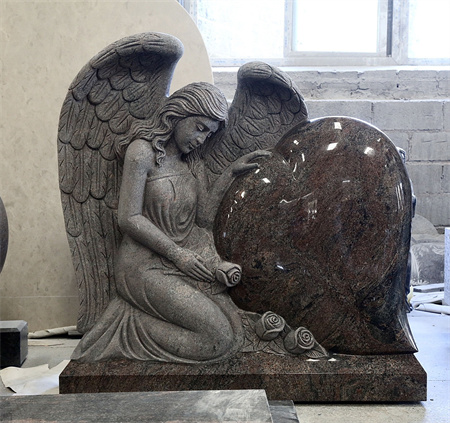The History and Origin of Granite in Memorial Stone Crafting
Granite has long been the cornerstone of memorial stone crafting, a material revered for its durability, beauty, and timelessness. For centuries, this natural stone has been the medium of choice for commemorating the lives of loved ones, serving as a testament to human resilience and memory. To understand the deep connection between granite and memorial stones, it’s important to explore both the history and the origin of this revered material.
Granite is an igneous rock, formed deep beneath the Earth’s surface through the slow crystallization of magma. Over millions of years, the pressure and heat cause minerals such as feldspar, quartz, and mica to fuse together, giving granite its characteristic speckled appearance and immense strength. This rock’s natural properties make it an ideal candidate for a variety of construction purposes, but its most enduring association is with memorials and gravestones.
The use of granite for memorial stones dates back thousands of years. The ancient Egyptians, for instance, used granite in the construction of some of their most significant monuments, including their tombs and obelisks. These early monuments were not just practical; they were meant to symbolize the eternal nature of life and the afterlife. The Egyptians, aware of granite’s strength, chose it as a material that could withstand the ravages of time and stand as a lasting tribute to their rulers and gods.

As civilizations evolved, so did the use of granite. In ancient Rome, the development of monumental architecture and memorials became more sophisticated, with many emperors and public figures commissioning elaborate stone monuments, often made from granite. The Romans understood the durability of granite, using it for everything from public buildings to tombstones. The practice of inscribing names, titles, and commemorative messages on granite became a hallmark of their culture, laying the groundwork for the modern memorial stone industry.
By the Middle Ages, the tradition of using durable materials like granite for memorial stones continued in Europe. However, the use of granite remained limited, primarily due to the difficulty of quarrying and shaping such a tough material. During this time, many tombstones were still made from limestone or sandstone, which were easier to carve but not nearly as enduring. Yet, granite had already begun to find its place in churches, cathedrals, and monasteries, where it was used for intricate altar pieces, columns, and crypts.
It wasn’t until the 19th century that granite truly began to dominate the memorial stone industry, thanks to advances in quarrying and carving techniques. The Industrial Revolution brought about significant technological advancements, allowing for the mass production of granite memorials. Steam-powered tools made it easier to extract and shape granite, while innovative techniques in engraving allowed for highly detailed inscriptions and artwork to be added to gravestones. This period saw the rise of large cemeteries and the widespread use of granite for both personal tombstones and public monuments, such as war memorials.
The popularity of granite in memorial stone crafting surged in the 20th century. Granite quarries, especially in regions such as New England in the United States, became major centers of production. The stone’s exceptional durability ensured that memorial stones could stand the test of time, weathering the elements for generations without losing their integrity or appearance. Granite became synonymous with lasting remembrance and respect, with its elegant finish and sturdy composition conveying a sense of permanence and reverence.
Today, granite continues to be the preferred material for memorial stones, with modern tools allowing for even greater precision in design. Whether it’s a simple headstone or a grand memorial monument, granite provides an ideal balance of beauty and durability. Its resistance to wear and tear from weather, combined with its ability to hold detailed inscriptions, ensures that it remains the ultimate symbol of remembrance. Moreover, granite comes in a wide range of colors and textures, from deep blacks to soft grays, adding a personal touch to each memorial.
The enduring popularity of granite in memorial stone crafting is no accident. This remarkable stone, born from the heart of the Earth, has long been associated with eternity and remembrance. Its strength and beauty continue to honor the memory of those who have passed, ensuring that their legacies are preserved for generations to come. As we look to the future, it’s clear that granite will remain a central part of the memorial stone tradition, continuing to stand as a symbol of lasting love, respect, and remembrance.


